How to prevent bedbugs when traveling

French officials are attempting to quell Paris ' bedbug problem ahead of the 2024 Paris Olympics after footage claiming the appearance of bedbugs across France — in Airbnbs, on public transportation and at movie theaters — has gone viral on social media.
It's a timely reminder that bedbugs are an unfortunate yet common reality, whether you're at home or traveling. It has even led guests to sue hotels following outbreaks. There have also been instances of bedbugs found on board airplanes and at airports .
Approximately 20% of U.S. homes and hotels have bedbugs annually, and nearly 68% of the reported bedbug infestations stem from hotels.
"Bed bug populations have experienced a resurgence in many parts of the world over the past couple of decades, especially within the last couple of years due in part to increased travel postponed during the height of the pandemic," an entomologist from Orkin Pest Control said. "However, other factors have led to an increase in bed bug infestations in recent years, including resilience to treatment, lack of public awareness and changing pest control practices."
Travelers shouldn't worry about regularly encountering bedbugs in hotels, especially since reputable accommodations proactively control pests through treatments and routine inspections.
However, with all travel comes inherent risk, so it's important to be aware of the possibility and take preventive measures when traveling. This can help with early detection, especially in densely populated areas with lots of tourists.
"Cities and regions with major airports or transportation hubs often see higher rates of bedbug infestations because they can unknowingly hitchhike along with travelers from different locations," according to Orkin.
To help protect you and your belongings from bedbugs while on the road, here are five tips to follow, plus what steps you should take if you find bedbugs.

Tips to prevent bedbugs when traveling
Believe it or not, bedbug prevention starts before you begin your trip, though there are also several steps you'll want to take once you leave home to ensure your travels remain bedbug-free.
Check bedbug policies before making any hotel reservations
As you research properties for your trip, reach out to any hotel you're interested in to see what its bedbug policy is before you reserve a room.
Hotels should be able to speak to their bedbug prevention and control program, including regular inspections and access to a professional pest control company, according to the New York City Department of Health and Mental Hygiene .
Inspect hotel beds, cushions and drapes, and put luggage in the bathtub or shower
Do your due diligence the next time you're checking into a hotel room. A quick visual scan is your best defense (not all people who get bitten by bedbugs have a skin reaction, so you could be packing them up in your luggage and have no idea). Bedbugs are nocturnal, so if you arrive during the day, you likely won't be able to spot them in the flesh.
First, put your suitcase somewhere that is not on your bed. If there's no luggage rack, leave it in the entryway or even the bathroom. Anywhere is better than putting it on the bed — especially before determining whether your bed may be infested. Bedbugs hide in soft spots, so using a luggage rack is your best bet, as they can't climb up the metal legs.
When it comes to luggage, consider that bedbugs are less likely to attach to hard-shelled suitcases versus soft-shelled bags.
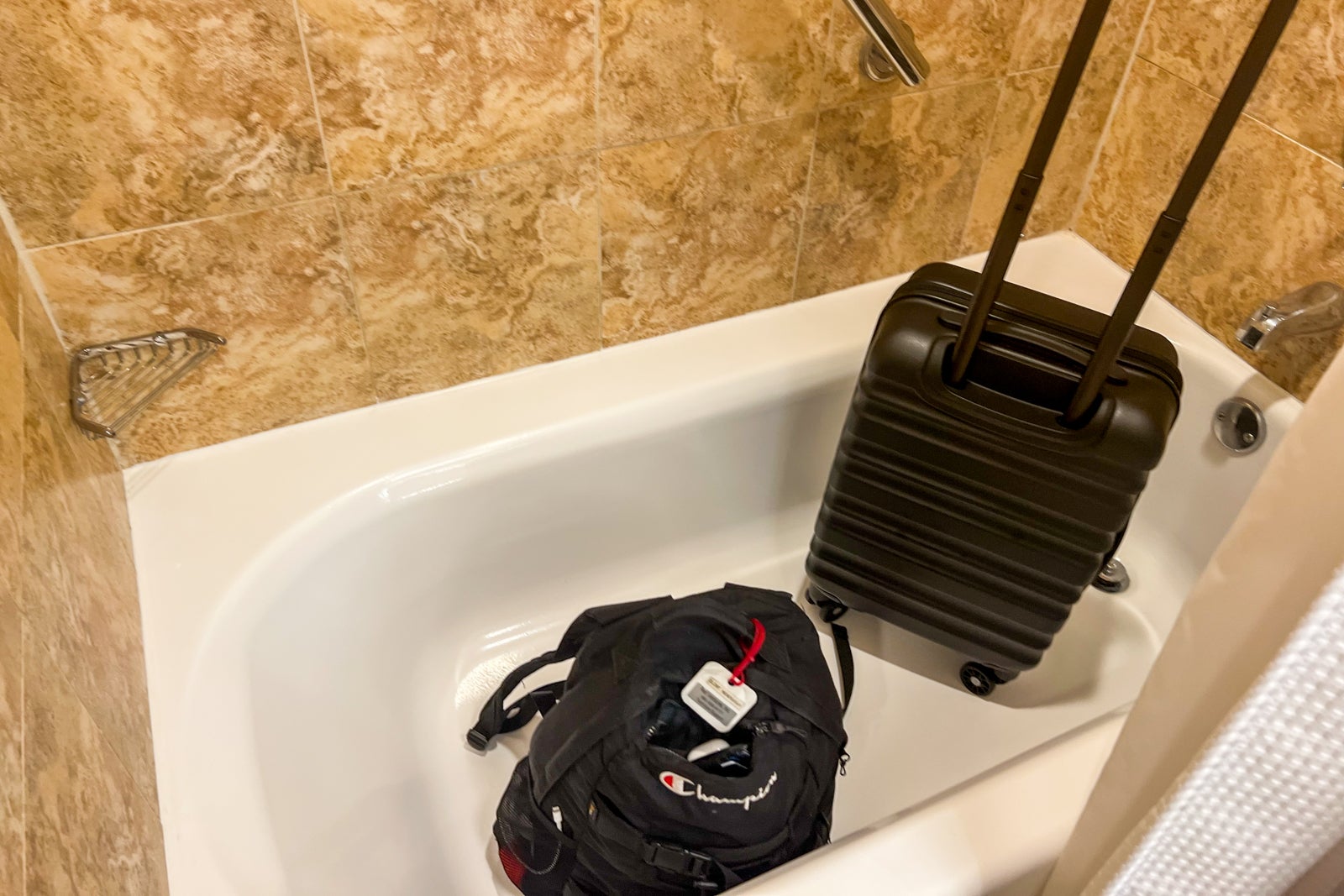
When you're ready to check for bedbugs, peel back the linens of your bed until you can see the mattress, particularly the corners and the lining. Instead of looking for actual bugs, you'll want to see if there's any bedbug excrement, which mimics tiny little ink blots that a pen might leave.
Search the sheets, inside pillowcases and, most importantly, alongside the seams of the mattress. Look under the mattress while you're at it, but be prepared to find a few crumbs here and there.
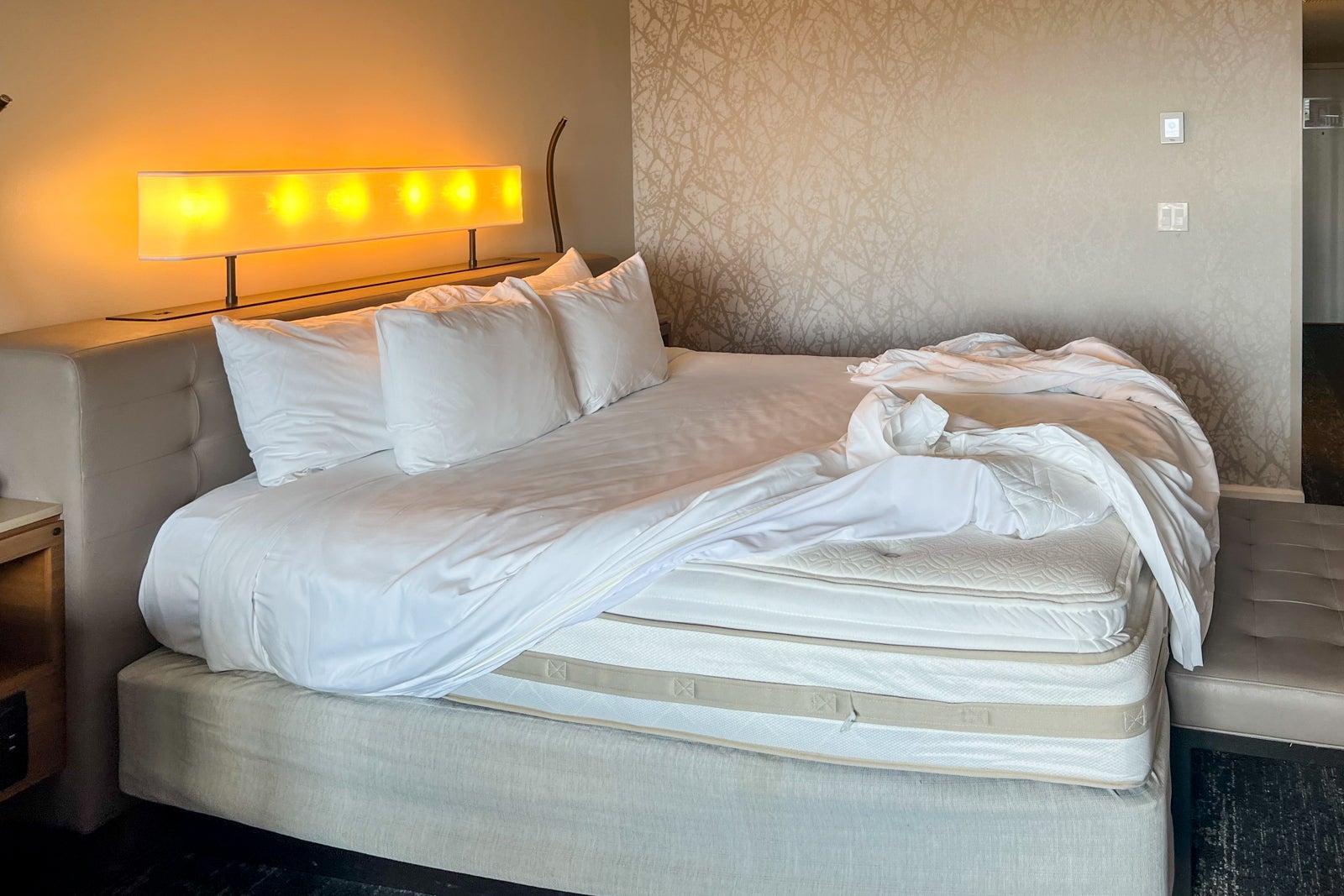
Be thorough with this process, and look beyond the mattress to include the headboard and any upholstered furniture.
Throughout your trip, regularly examine your clothing and luggage to catch a bedbug infestation in the early stages.
Bring a portable bedbug trap
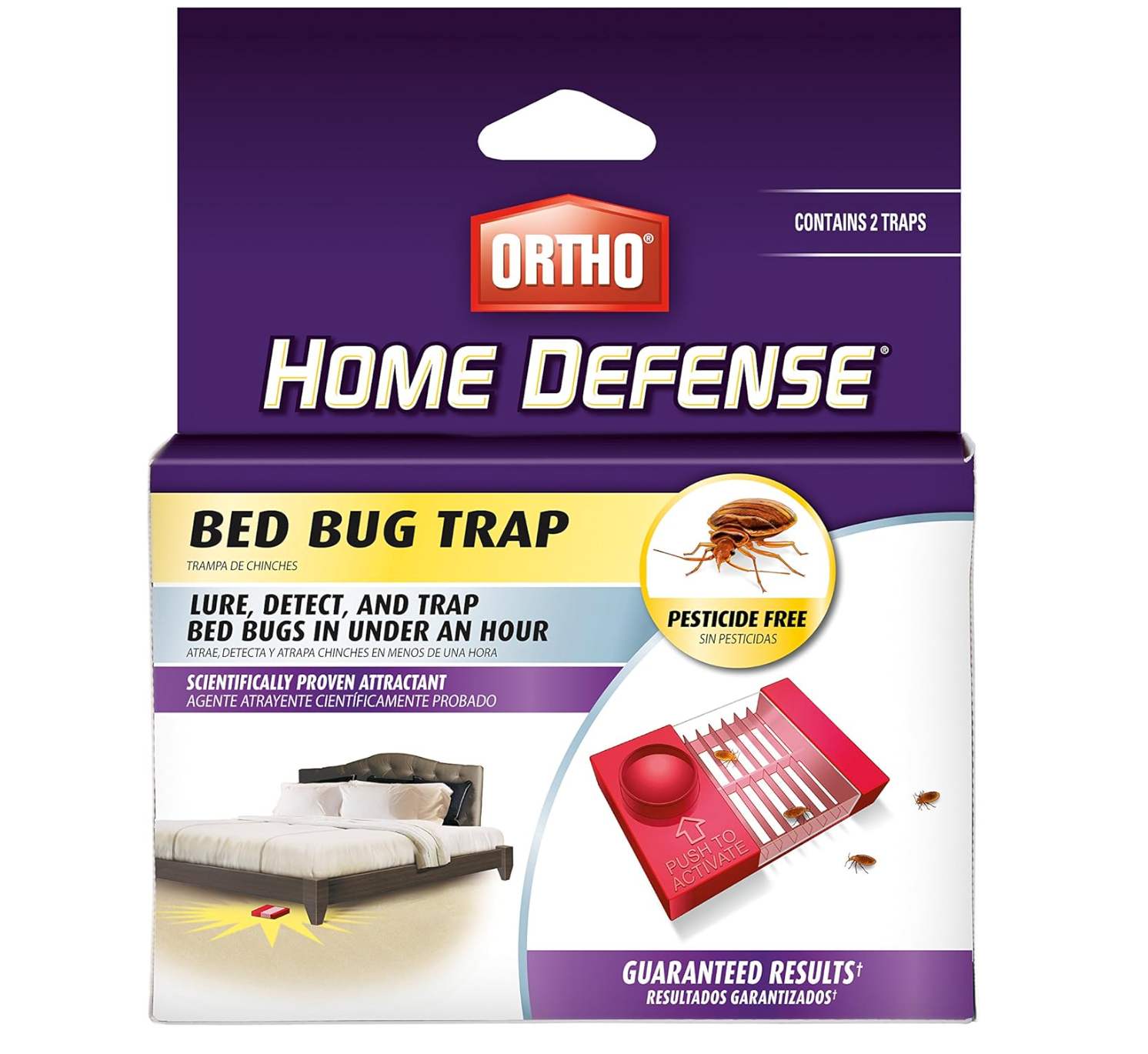
If you want to take it a step further, you can purchase a portable bedbug trap to accompany you on trips.
One such option is the Ortho Home Defense Bed Bug Trap , which retails for $17 and promises to attract any particularly evasive bedbugs within one hour of setting it up.
Clean your luggage with a steamer and spray
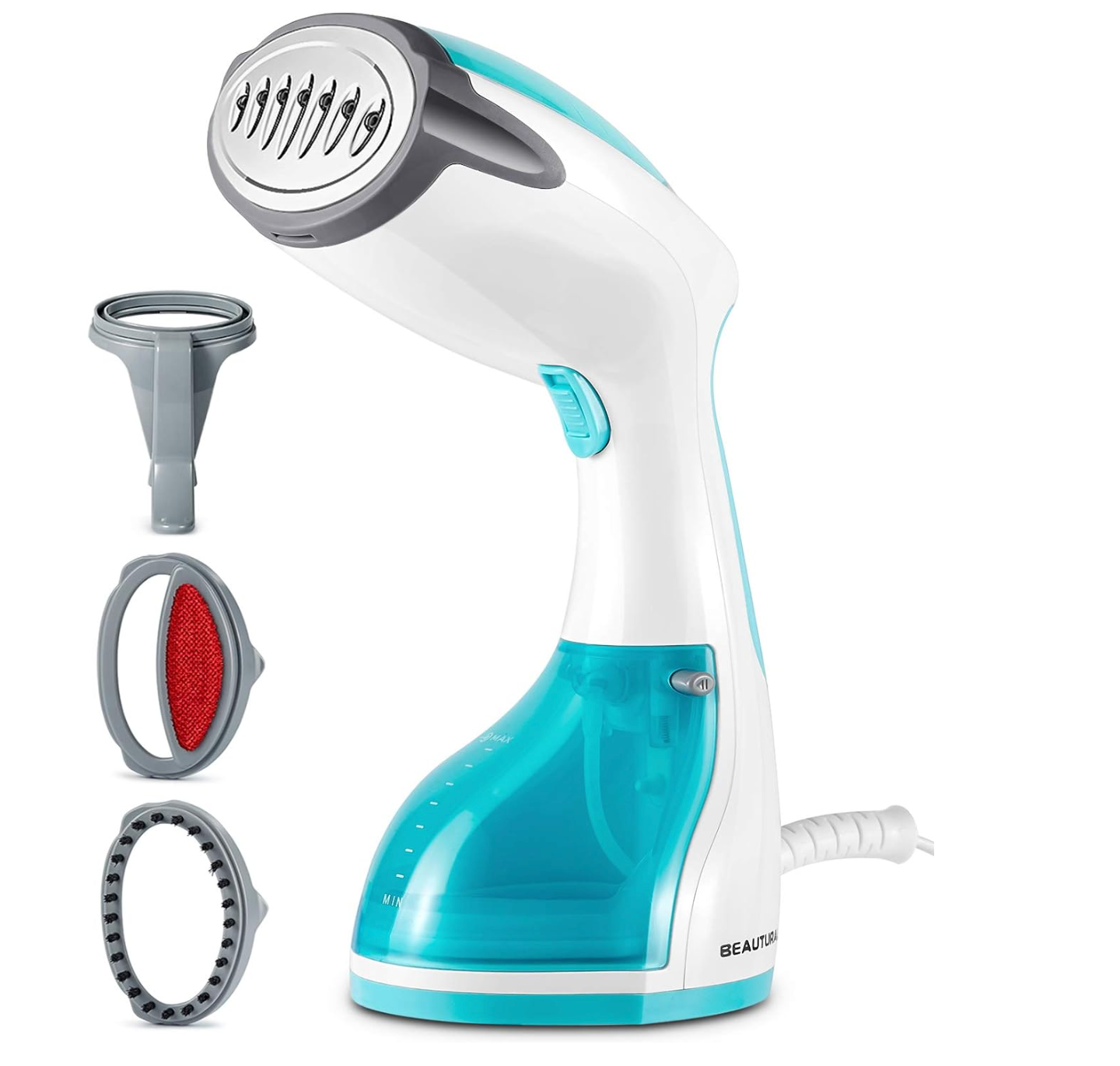
Once you complete your bed sweep, if you want further peace of mind, you can consider using a travel steamer to clean your luggage. To effectively kill bedbugs, the surface temperature needs to be at least 120 degrees Fahrenheit, so you'll need a steamer strong enough to reach those temperatures, such as the Beautural travel steamer .
For $35, this steamer provides 15 minutes of continuous steaming via a detachable 8.79-ounce water tank. It claims to heat up in 30 seconds and is safe on all fabrics, including clothes, curtains and furniture. It has three additional attachments for versatile steaming options.
Be sure to steam every inch of your luggage inside and out, remembering to unzip the lining and steam inside the pockets, around the handles and by the wheels.
If you are still concerned, consider removing and washing all clothing in hot water before drying your items on high heat.
If steaming your suitcase and washing your clothes is too much effort, pack a travel-size bedbug spray like this one from Hygea Natural for $10.99. At 3 ounces, it meets the Transportation Security Administration's 3-1-1 liquids rule guidance, so you can carry it on a plane. It's even child- and pet-safe and doesn't have an odor, so it won't leave a residue.
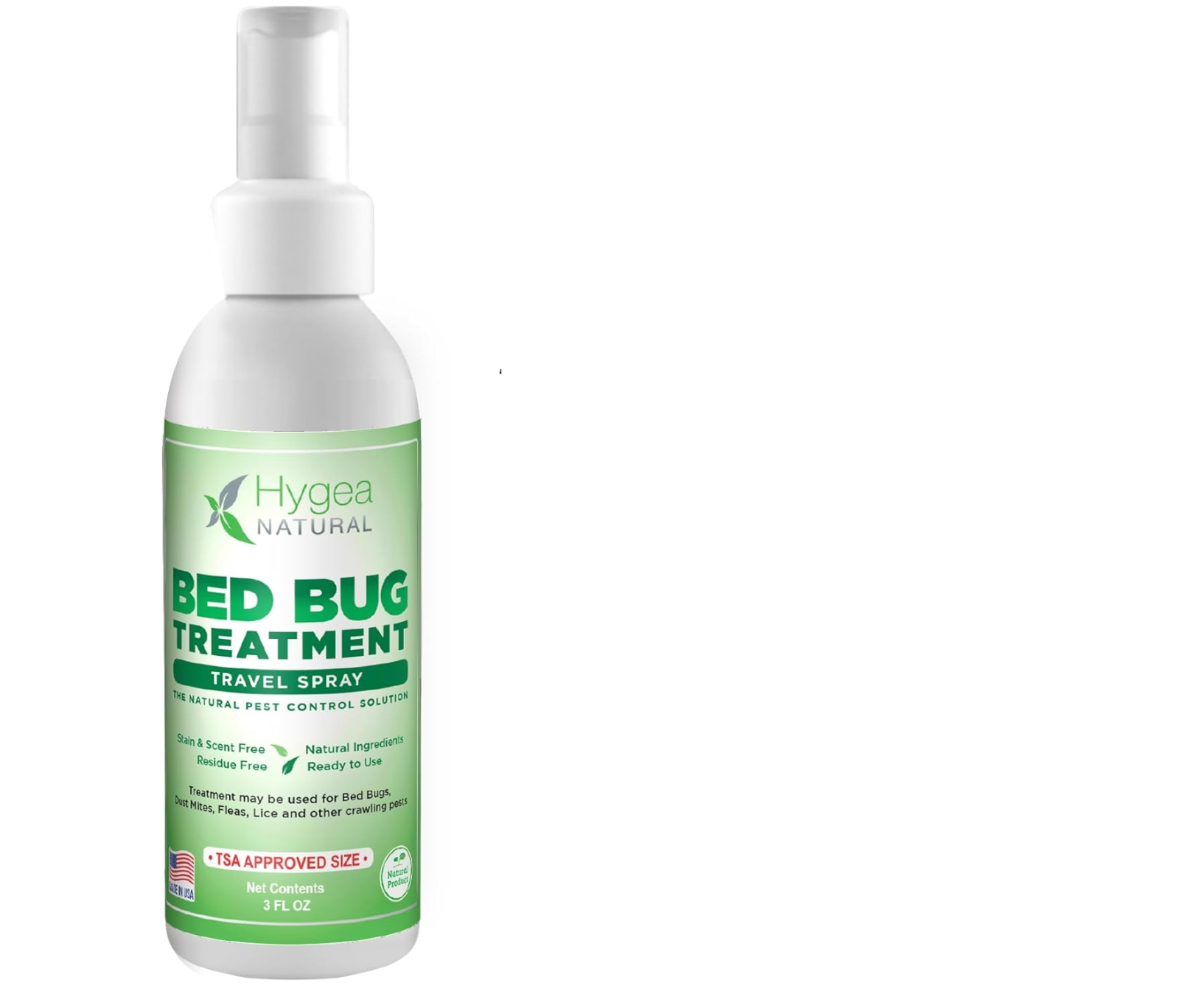
Simply spray it upon the affected surface to exterminate any concerns about bedbugs.
Check your airplane seat
"While people mostly think of bedbug infestations at hotels, other common bedbug hiding places are taxis, buses and airplanes," according to Orkin. "Bed bugs are excellent hitchhikers, so they have plenty of opportunity to catch a ride with unsuspecting travelers. The insects creep into upholstery, carpeting, and gaps along seat frames."
To avoid bedbug issues while on a plane, Orkin suggests inspecting the upholstery, carpeting and gaps along seat frames after you board and before you sit down to look for eggs or even full-size bugs near the cracks and crevices of the seatback cushions.
Steps to take if you find bedbugs
In the event that you discover signs of a bedbug infestation at a hotel, immediately tell the front desk agent and ask to be moved to a room that is neither above, below nor next to the offending room.
Your next order of business is getting your money refunded and leaving the property immediately. If the hotel offers to move you to another room, ask to speak to a manager. Chances are, if the bugs are in one room, they'll be in others.
After you've booked other accommodations, make sure no bugs have been transported with you to the new location by washing and drying your clothes on high heat.
If you have a credit card that offers trip protection , call the issuer to find out if the company will cover the purchase of new luggage since there isn't an easy way to treat large baggage.
Once you get to the new hotel, place the clothes you've worn in a plastic trash bag and seal it up until the clothes can be washed. Lastly, consider packing clothing in resealable plastic bags for an extra layer of protection.
If you find bedbugs at home, start with containing the infestation by isolating the affected areas.
"Do not move items from infested rooms to non-infested ones to prevent the bugs from spreading," the Orkin entomologist said. "Keep in mind if you start sleeping in another area of the house, you may spread infestation there, too."
Once the mess is contained, declutter and clean, as this will make it easier to spot and find the other bugs. Immediately wash your bedding, curtains, clothing and any other affected fabric in hot water and dry on hot heat to kill any remaining bugs or eggs.
"Because bed bug infestations can be difficult to treat, if you wait too long to get help, the problem only gets worse," Orkin said. "Hiring a pest control company is the best way to get rid of bed bugs for good. They will inspect your home, identify the source of the problem, and create a treatment plan that will eliminate these pests."
Bottom line
On your next trip, Orkin reminds travelers to keep the acronym SLEEP in mind:
- Survey the hotel room for signs of an infestation.
- Lightly lift and look in bedbug-hiding spots (the mattress, behind baseboards, pictures and torn wallpaper).
- Elevate luggage away from the bed and wall, and place belongings in the bathroom or on counters instead of on the bed.
- Examine your luggage carefully while repacking and once you return home. Always store luggage away from the bed.
- Place all your clothing from your luggage in the dryer for at least 30 to 45 minutes at the highest setting once you return home.
Also, remember that bedbugs have nothing to do with cleanliness.
"You can pick them up in the finest hotels, and they can hitchhike into the cleanest homes at any time," the Orkin entomologist said. "You can help reduce your chances of a costly bed bug infestation by catching them early."
Even once the bugs themselves are gone, the trauma can stay with you for a while. Taking the time to do your homework ahead of time before riding an airplane or checking into a hotel is well worth the effort.
Related reading:
- Bedbug infiltrating Paris: What it's like dealing with an infestation
- Should you get travel insurance if you have credit card protection?
- The best travel insurance policies and providers

How to Prevent Bed Bugs While Traveling: 8 Effective Tips
Backpacking , Packing , Packing Tips
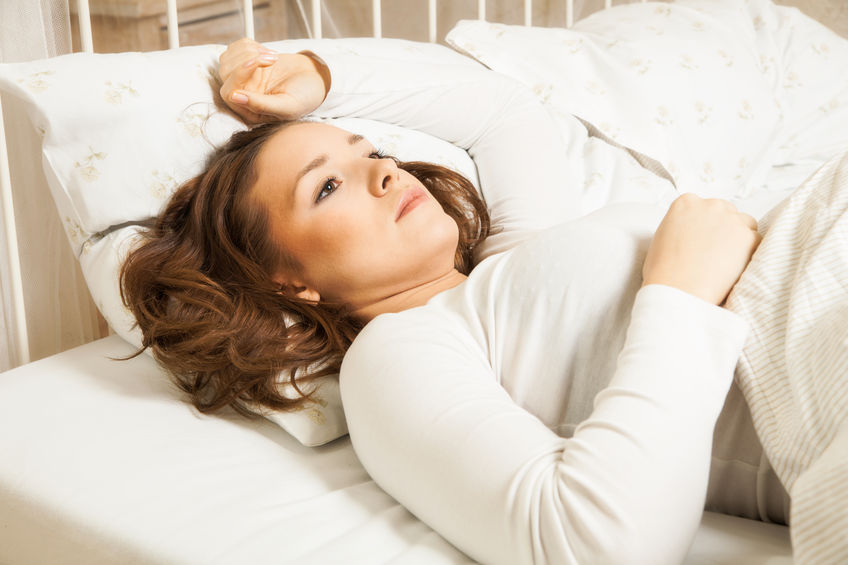
Support TFG by using the links in our articles to shop. We receive a small commission (at no extra cost to you) so we can continue to create helpful free content. We earn from qualifying purchases made to the featured retailers. Thank you, we appreciate your support!
It’s not the nicest of topics but the truth is that not all travel is glamorous and Instagram-worthy. Budget travelers, backpackers, and some unfortunate vacation-goers may find themselves in unpleasant accommodation conditions infested with certain pesky little creatures: bed bugs. Eww. Gross but true. Learn how to prevent bed bugs while traveling with these eight helpful tips!
How to Prevent Bed Bugs
Written By: Jessica Lippe
Table Of Contents
On my first overnight trip abroad, I unknowingly shared a bed with hundreds of hungry bed bugs. I woke up with bite marks decorating my legs, and the weeks that followed included lots of itching.
Editor’s note: this happened to me on the first stop on my RTW trip , too!
Fortunately, this one buggy experience didn’t stop me from discovering the joy of travel. Instead, I learned more about these tiny creatures and gained a few skills to detect and avoid them.
Since this outing, I’ve gone on many more travels and managed to avoid bed bugs each time, including a return trip two years later to the same hotel where I had my first and only bed bug encounter.
The secret to traveling light is to create a functional but minimalist capsule wardrobe. Learn more in my guide !
Travelers are always at risk for bed bugs. It doesn’t matter if you stay in the swankiest resort or the cheapest hostel.
I’ve been impressed over the past few years with the measures that the hospitality industry has taken to reduce infestations, but there are still a few things that we, as individuals, can do as well. All it takes is a few simple items that you can easily fit in your luggage.
Note that none of the following can guarantee you an adventure free from bed bugs, but they can help slow the spread of these unwanted hitchhikers.
Here are eight tips on how to prevent bed bugs while traveling:

Delsey Helium Carry-On
The Right Kind of Suitcase
I’ve noticed that suitcases on the market today are mostly black. Although black does go with everything, it’s very difficult to spot bed bugs on a suitcase of this color!
Light-colored bags can help you detect bed bugs earlier. Better yet, a hard-sided suitcase means fewer access points for bed bugs compared to a fabric bag.
Take a look at the best hardside luggage options available!
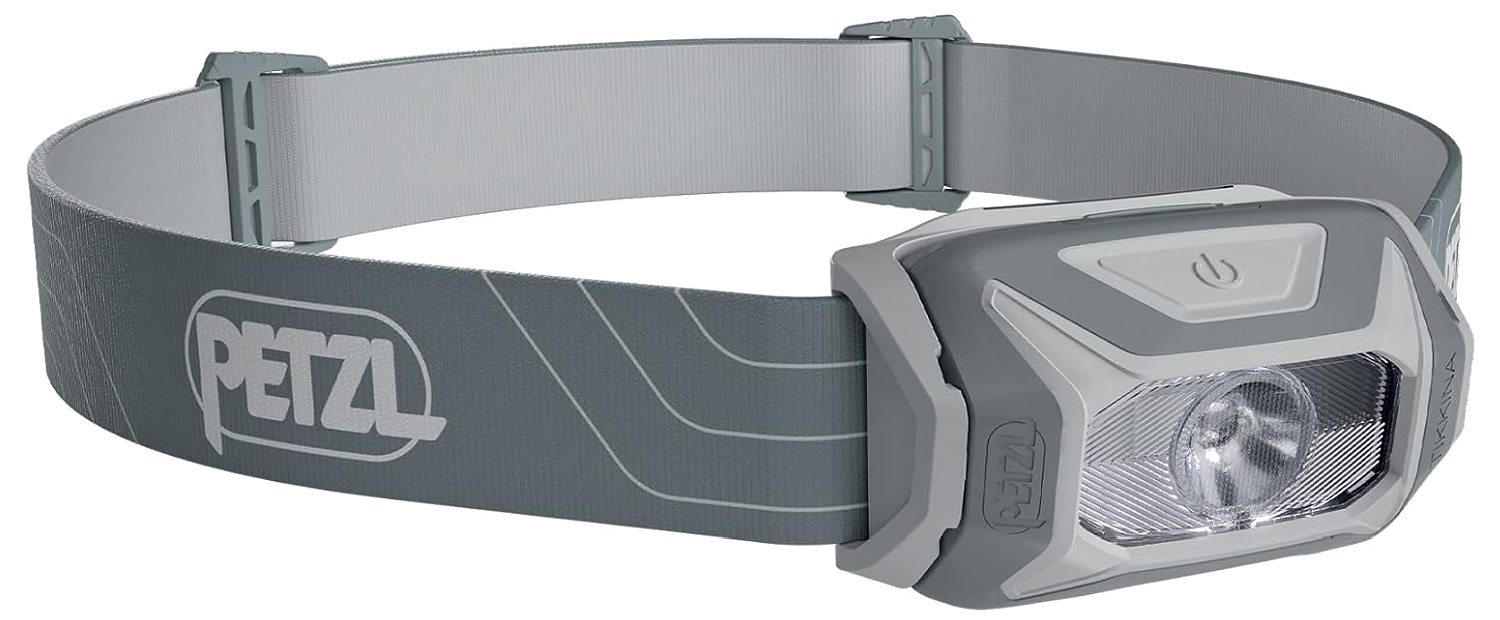
PETZL Outdoor Headlamp
LED Flashlight
When you first arrive at a new accommodation, it’s a good idea to do a bed bug inspection. Bed bugs thrive in darkness, so turn off the lights and close the curtains to make sure you’re as thorough as possible. Using your flashlight, take the sheets off the bed and inspect the corners of the mattress.
If you see little dots, it could be blood, waste, or carcasses of bed bugs. Also, shine your flashlight in outlets, furniture screws, and other tiny hiding places.
If you see anything scurrying away from the light, leave the room and notify staff immediately. This may not help you in your mission on how to prevent bed bugs initially but at least you might be able to switch rooms.
Find out why we always pack a travel headlamp when traveling to certain destinations!
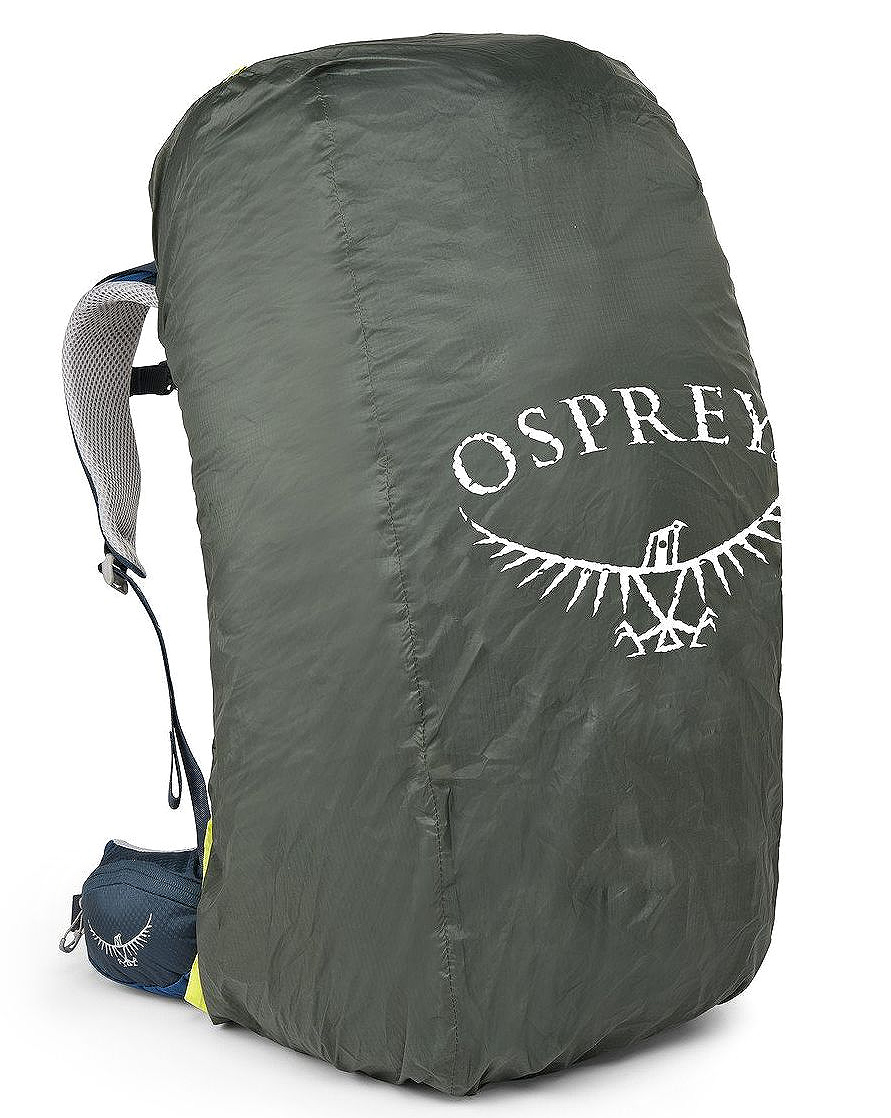
Osprey Ultralight Raincover
Heavy-Duty Garbage Bag
How to prevent bed bugs has a lot to do with planning ahead. You should keep your luggage away from any item that has the potential for bed bugs. This includes beds and other people’s luggage. When flying, don’t check your luggage but keep your carry-on with you.
If you’re staying in a hotel, use the foldable luggage holder if it’s provided. If you’re in a hostel, keep your belongings in a metal locker.
Read our hostel checklist !
But there may be some instances where you have no choice but to keep your bag where it will touch furniture and other people’s suitcases.
Whether you’re using luggage storage or stowing your backpack in the underbelly of a long-distance bus, first put it in a large, heavy-duty garbage bag as a makeshift bed bug barrier.
You can use this garbage bag method any time you want to protect your luggage. The drawbacks are that it can be a hassle to put on and take off, and you don’t want your bag to be mistaken for trash!
If you do end up getting bed bugs, please keep your luggage bagged up so you prevent spreading it to other travelers.
You can also buy a reusable backpack cover or suitcase cover like the one shown above.

Ziploc Storage Bag
Plastic Baggies
Ziploc bags provide the same kind of protection as a heavy-duty garbage bag, but are more ideal for clothing and other small objects. Using a garbage bag outside your suitcase and baggies inside your suitcase can work double-duty in isolating and avoiding the spread of bed bugs.
As a bonus, Ziploc baggies do a great job of organizing your belongings. You could also use packing cubes !
Take a look at the best luggage organizers !

Eddie Bauer Full-Zip Hoodie Sizes: XS-XXL Regular | S-L Petite | M-XXL Tall | 2X-3X Plus
Long Pants and Long-Sleeved Clothing
During my bed bug incident, I wore capri sweatpants to bed. The bugs feasted on my calves, but I didn’t have a single bite mark above my knee.
I’ve heard from some people that clothing doesn’t always deter bed bugs, but there’s no harm in at least trying to keep them away with a protective layer in your efforts on how to prevent bed bugs.
Sleep in long pants and a long-sleeved top whenever temperature permits while traveling. Since bed bugs can infest more than just mattresses, I try to wear long pants on travel days in case they are lurking in a bus or plane seat. I’ll often even wear a scarf over my head while napping because I don’t want my face to be bitten!
There’s a variety of bug repellant clothing available. Neutral colors might be your best bet if you plan to wear them for anything other than sleeping. Take a look!

Zella Live In High Waist Leggings | Sizes 1X-3X Plus
Machine-Washable Clothing
Even if you insist on wearing shorts and tank tops when you travel, at least make sure that all your clothes can go through a washing machine and dryer. I mostly hand-wash and line-dry my clothes when I travel, but I still check the clothing tags before I pack.
If I’m afraid that I’ve had contact with bed bugs, the heat from the hot water and clothes dryer will kill them. Although machine-washable electronics and suitcases would be nice, isolating them and wiping them down has seemed to work so far.
These are the best leggings for women that travel according to our readers!

Ethique Refreshing Soap Bar
Bar of Soap
Let’s say, despite your precautions, that you do pick up bed bugs. The good news is, you don’t have many health issues to worry about. Unlike other bugs you may face while traveling, such as ticks and mosquitos, bed bugs don’t spread disease.
However, those nasty bite marks they leave behind are at risk of infection. Clean the bites regularly with soap, and you can continue your adventures without delay.
Here are other solid toiletries to help you minimize liquids!

Sawyer Products Insect Repellent
Bug Spray? Eh, Maybe Not
The bug spray you wear to avoid mosquito bites won’t help you at all with bed bugs.
You could purchase a small canister of bed bug spray, but it comes with downsides. Most sprays on the market don’t kill bed bugs; they only repel them. That means the bugs will just hide in harder-to-find places.
If you simply want to avoid bed bugs during a short-term stay, a spray might be worth considering. But for long-term stops, these sprays will only prolong the problem.
Especially don’t use these sprays if you accidentally bring bed bugs into your own home! There are other products and methods you’ll need to use for an infestation.
For mosquitos, these are the best insect repellants for travel!
EXAMPLES OF SOME (BUT NOT ALL) BUDGET TRAVEL ACCOMMODATION

What are your tips on how to prevent bed bugs? Please comment below!
For more travel essentials, please read:
- Best Anti-theft Travel Bags
- 8 Budget Travel Essentials
- The Best Insect Repellant
- How I Could’ve Kept My Purse from Getting Stolen
LIKED THIS POST? PIN THIS PIC TO SAVE IT!
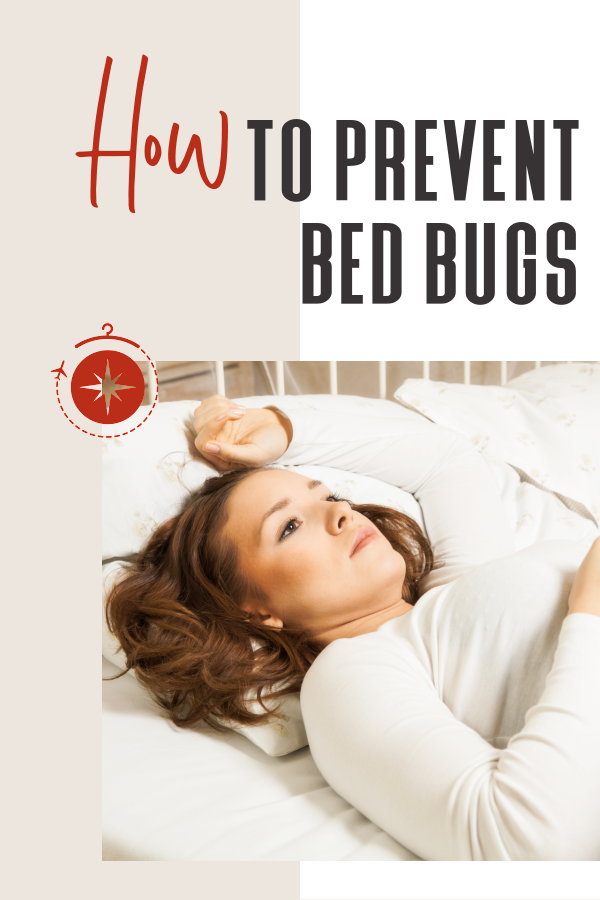
I hope you liked this post on how to prevent bed bugs. Please share with your friends on Facebook, Twitter, and Pinterest. Thanks for reading!

Author Bio: Jessica Lippe craves uncommon adventure and has fond memories in Northern Italy as part of last summer’s Mediterranean Trek. Read about her travels and other adventures at JessicaLippe.com .
16 Comments
Spray alcohol in beds and linen is the best way to ride off the bed bugs. I wasted lots of money in sophisticated insecticides and nothing work.
Thanks for sharing your tips to prevent this with us Silvia.
so i’ve been told time and time again that the hotel foldable luggage racks are one of the worst places to actually set your luggage on, as well as the bed and a carpeted floor. if you have a countertop they say that’s the best place, or the bathtub (which isn’t always practical, i know)
Hi Lisa, thank you for sharing your tips on how to avoid bed bugs with us! 🙂
is there a lightweight sleeping bag that will keep them out???
Hi Mark, thank you for reaching out! You may find this article helpful: https://www.travelfashiongirl.com/sleeping-bag-liner/ A sleeping bag liner is great for keeping bugs out. Hope this answers your question! 🙂
Hello! I will be traveling cross country soon via train, spending 2 nights each way, sitting in royal blue cushioned coach seats. I have already bagged everything going into my (washable) duffel bags. I will change my clothes in the train station before entering my daughters car. (and bag the clothes I wore on the train.) I will outer bag the duffel bags before they go into my daughters trunk. When we arrive at her home, I will also spray them down with 97% alcohol (outside) when I remove the outer bags, then take the duffel bags to be dried in a laundromat to be safe. Do you think I should also put all my bagged clothes from within my duffel bags into a dryer when I empty the luggage? Also, I am stumped about my purse while on the trains. I will bag my purse with a large zip lock bag (ordered on line). Should I also bag everything within my purse? (wallet, cell phone, etc.) Any other ideas would be great! Thank you so much!!!!!
Hi Sharon, it sounds like you have everything covered! If your are particularly worried about your clothes put them in the dryer once you arrive at your destination as the heat should help to get rid of the bugs whilst protecting your clothes. Hope this helps! Have an amazing time on your trip! 🙂
Thank you for the tips. Its my biggest travel fear. What to do if, ever, you bring them home?
Try to wash your clothing as soon as you get home and never put your suitcase on your bed.
Washing does not kill bed bugs, so don’t put your bedbugs in your washer! Instead, dry your clothes FIRST (when still dirty) in a hot dryer, for 50-60 minutes. Then wash and dry your dirty washable items. This heat treatment will also protect many clothes that you cannot safely wash. After all, you cannot dry all clothes for an hour in a hot dryer after washing, it will damage many clothes. But when heated while dry, many items do fine. Also works for a lot of footwear, cheap small backpacks, etc. But don’t put your favorite sneakers or a fancy backpack in the dryer, it might not survive.
if you want to stop mosquito bites without those nasty sprays just take Vitamin B1 25mg everyday. The vitamin causes a reaction on your skin that the mosquitos dislike. I’ve used this trick for 50 years, never had it fail. Unfortunately it has not worked on those little biting gnats.
When I lived in Vancouver Canada we got bedbugs visiting. So we get to our apartment- we got naked ?? threw our clothes away and jumped in the shower.. I was in my twenties then and the thought of a bedbug and how hard to rid I was willing to streak
I love following your suggestions. Though we can’t travel at the moment, we soon will be again.
My biggest fear when travelling… not the bugs as much as the fear of bringing them home and trying to get rid of them then. Thanks for the info!
Happy to help 🙂
Submit a Comment Cancel reply
Your email address will not be published. Required fields are marked *
Save my name, email, and website in this browser for the next time I comment.


What to Know About Bed Bugs—and How to Avoid Them While Traveling
A recent outbreak in paris served as a crucial reminder that it’s important to know how to spot and prevent these pests from invading your sleep, belongings, and personal health..
- Copy Link copied

Few places are safe from bed bugs. Here’s what travelers should know to avoid them.
Illustration by Shutterstock
Bed bugs, you could say, are having a moment—or, perhaps, un moment .
Paris was the latest scene of an outbreak that made global headlines as the city that’s hosting the 2024 Summer Olympics scrambled to arrest a resurgence of the insects that are on every traveler’s no-go list.
But Paris is hardly alone when it comes to the pests; bed bugs can be found almost anywhere in the world and at any time.
So, what can travelers do should they encounter the pesky problem on the road? Here’s what to know.
What are bed bugs?
Bed bugs are wingless parasitic insects found across the Americas, Africa, Europe, Asia, and Oceania.
The University of Florida’s Institute of Food and Agricultural Sciences describes bed bugs as “blood-feeding parasites of humans, chickens, bats and occasionally domesticated animals,” and adds that they are sometimes referred to as chinches, red coats, or mahogany flats.
“Bed bugs have probably been associated with humans for more than 100,000 years,” says Rob Anderson , an associate professor in the biology department at the University of Winnipeg in Manitoba, Canada, who teaches a class on blood-feeding pests, which include bed bugs as well as mosquitoes, fleas, ticks, and other insects. “They are obligate blood feeders, which means they must have blood to survive and reproduce.”
Considered nest parasites—organisms that reside in the immediate area where the animal host (that would include you) spends most of its time—they live off the blood or skin tissue of the host animal. “Bed bugs are aptly named because they hang out in and around the bedroom where their blood hosts spend lots of time and reliably return. Bed bugs only come onto a host such as a human to blood feed then return to a nearby crevice or hiding place to digest the blood ,” says Anderson.
Adult bed bugs are flat and oval-shaped, grow to about 4 to 5 mm long, and are equipped with “piercing-sucking mouthparts, so they bite and suck blood like a mosquito” according to the University of Florida.
The U.S. Centers for Disease Control and Prevention (CDC) says two species of bed bugs are “usually implicated in human infestations”— Cimex lectularius and C. hemipterus , the former of which is considered cosmopolitan (meaning they are “found or present all over the world,” says Anderson) and the latter appear mostly in the tropics and subtropics.
Bed bugs most often feed on people at night while they sleep and tend to bite the exposed upper part of the body. And while they’re undoubtedly a nuisance, bed bugs are not considered to be “effective vectors of disease” according to the CDC, which notes that the primary medical risk is associated with inflammation from their bites.
Where are bed bugs commonly found?
Bed bugs are some of the world’s most ubiquitous travelers.
“They are to be found in street-side hostels, huts in small villages, and first-class hotels,” says Anderson.
“Many hotel chains regularly deal with them, but they seldom admit it because it’s not good for business,” he says, attributing the presence of bed bugs in hotels to the “the nature of their transitory, ever-changing clientele,” he wrote in an email to AFAR.
According to the CDC’s website, bed bug infestations tend to happen near areas where people sleep, which could mean anywhere from hotels and cruise ships to buses and trains.
The bugs tend to feed at night and hide during the day in the seams of mattresses, behind headboards, inside cracks and crevices in a room, in bed frames, furnishings, and box springs, among other locales, according to the CDC.
Once inside a dwelling, says Anderson, bed bugs’ numbers can build up long before humans even notice them—especially if there are pets in the house that they can feed on. That’s because pets might take the brunt of the early blood-feeding attention of the initial few bed bugs introduced, he says, before they’re present in enough numbers to attract the attention of humans.
He adds, “They move around the world every day with travelers (usually hitching rides in luggage) and sometimes to home where they may establish.”
For people who bring bed bugs home with them from their travels, Anderson warns you might not realize you have a stowaway until some time after returning home.
How do you know if you have bed bugs?
The most common sign of having bed bugs or having been exposed to them is the appearance of their bite marks on your upper body, namely on the face, arms, neck, or hands, after sleeping someplace where they live.
“Often the red spots are in groups of two or three because bed bugs often poke their needle-like mouthparts into the skin several times until they lacerate good blood vessels with enough blood to flow and feed on,” says Anderson.
According to the CDC website, most people won’t feel the bed bug bite itself when it happens since the insects inject an anesthetic and anticoagulant when they bite their victim (how thoughtful of the buggers).
“They tend to feed at night when people are sleeping because they’re less likely to be detected, and they only stay on the human skin for as long as it takes to feed,” says Anderson, adding, “after which they return to the nearest hiding place, some kind of crevice.”
You can look for signs of bed bugs—both their physical forms in the crevices of mattresses and folds of sheets as well as signs of rust-colored blood spots on your mattress (it comes from them being crushed and their fecal material, which is filled with blood, according to the CDC). “The adults are easily visible,” Anderson says. “In large infestations, they often leave a line of blackish, stinking blood feces deposited wherever they hide when off the blood host.”
Look for a dark line right where the mattress or box spring sits against the bedroom wall, he says, which is an indicator that bed bugs are present.

If you bring bed bugs into your home from your travels, you may want to contact a reliable pest control company to help quell an outbreak.
What should you do if you do get bed bugs?
If you get bed bug bites, try to avoid scratching them, as that’s likely to cause more problems by opening up your skin to secondary infections, Anderson says.
Thankfully, “They’re not transmitters of worrisome pathogens as far as an astounding amount of evidence goes,” he adds. “But the bites can be annoying, especially for people with allergic sensitivity to the saliva bed bugs inject when they are feeding (as all blood feeding pests do).”
To relieve the itchiness, he suggests applying topical antihistamines such as Benadryl spray. (As with the use of any drug, consult with a doctor beforehand to make sure you’re not allergic or to address any other concerns.)
If you suspect a bed bug invasion where you live, contact a trusted pest control company experienced in treating bed bugs to inquire about fumigation services and other available methods of dealing with them.
What are the best ways to avoid getting bed bugs?
You’re at risk of encountering bed bugs both at home and nearly any place you travel.
According to the CDC, “Anyone who travels frequently and shares living and sleeping quarters where other people have previously slept has a higher risk of being bitten and/or spreading a bed bug infestation.”
Lyndsey Matthews, senior commerce editor at AFAR, and a firm believer of never putting your suitcase on your bed (in part to help prevent the spread of bed begs), has herself experienced bed bugs three times and has some advice.
“They are bigger than you think—an adult is the size of an apple seed,” she says, so look for them in the seams of headboards and mattress and under sheets, where you may find their eggs, feces, or the bugs themselves.
When you get home from a trip, she suggests washing and drying everything on high heat. If your suitcase can’t be washed in a washing machine, it’s a good idea to steam clean it at a high temperature, she says.
There are some things you can do to avoid bringing bed bugs home with you, too.
Anderson says you can reduce the risk of bed bugs invading your bags and suitcases by keeping them inside well-sealed large garbage bags when staying in temporary housing, including hotels. He says he inspects any hotel room or apartment he rents to look for the obvious signs of bed bugs and checks his belongings for signs of them, too, before packing up and returning home.
In 37 years of traveling around the world and doing research on bed bugs, Anderson says he’s encountered them and been bitten by more than his fair share—but he has so far managed to avoid bringing any of the insects back home with him as a souvenir.
“Bed bugs have been an occupational hazard for me because of the travel to the tropics and often staying in remote, very rudimentary digs in field research sites where bed bugs just exist in significant numbers,” he says. “I’m pretty rigorous about inspecting my luggage, or spraying it or sealing it in containers if I suspect there are bed bugs wherever I’m staying at a given time.”

Diseases & conditions
Everyday care, darker skin tones, cosmetic treatments, public health programs, find a dermatologist.
- For AAD Members
- Coronavirus Resource Center
- Skin cancer
- A to Z diseases
- A to Z videos
- Skin care basics
- Skin care secrets
- Injured skin
- Sun protection
- Hair & scalp care
- Nail care secrets
- Diseases & Conditions
- Your safety
- Age spots & dark marks
- Cellulite & fat removal
- Hair removal
- Scars & stretch marks
- Younger-looking skin
- Skin cancer awareness
- Free skin cancer screenings
- Kids' camp
- Good Skin Knowledge
- Shade Structure grants
- Skin Cancer, Take a Hike!™
- Awareness campaigns
- Flyers & posters
- Get involved
- What is a dermatologist?
- FAAD: What it means
- How to select a dermatologist
- Your digital health
- Prior authorization
- Dermatologists team up to improve patient care
- DIY acne treatment
- How dermatologists treat
- Skin care: Acne-prone skin
- Is it really acne?
- Types & treatments
- Childhood eczema
- Adult eczema
- Insider secrets
- Types of hair loss
- Treatment for hair loss
- Causes of hair loss
- Hair care matters
- What is psoriasis
- Diagnosis & treatment
- Skin, hair & nail care
- What is rosacea
- Skin care & triggers
- Types and treatment
- Find skin cancer
- Prevent skin cancer
- Raise awareness
- Español
- Basic skin care
- Dry, oily skin
- Tattoos and piercings
- Anti-aging skin care
- For your face
- For your skin routine
- Preventing skin problems
- Bites & stings
- Burns, cuts, & other wounds
- Itch relief
- Poison ivy, oak & sumac
- Shade, clothing, and sunscreen
- Sun damage and your skin
- Aprenda a proteger su piel del sol
- Nail care basics
- Manicures & pedicures
- Light spots
- Razor bumps
- Caring for Black hair
- Scalp psoriasis
- Weaves & extensions
- Central centrifugal cicatricial alopecia
- Frontal fibrosing alopecia
- Hairstyles that pull can cause hair loss
- Acanthosis nigricans
- Acne keloidalis nuchae
- Hidradenitis suppurativa
- Keloid scars
- Lupus and your skin
- Sarcoidosis and your skin
- More diseases & conditions
- Lesson plans and activities
- Planes de lecciones y actividades
- Community grants
- Finding accurate health information
- Health apps
- Wearable medical devices
- Telemedicine
- Taking pictures of your skin
- Protect your information
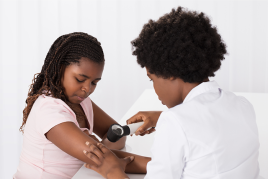
Both the CDC and the FDA warn against treating this common childhood condition on your own with non-prescription treatments. See what they recommend.

Find answers to questions patients ask about this newer treatment option, including, “What’s involved in switching from a biologic to a biosimilar?”

Everyone's at risk for skin cancer. These dermatologists' tips tell you how to protect your skin.

Find out what may be causing the itch and what can bring relief.

Find out why dark spots appear and what can fade them.

If you have what feels like razor bumps or acne on the back of your neck or scalp, you may have acne keloidalis nuchae. Find out what can help.

You can expect permanent results in all but one area. Do you know which one?

If you want to diminish a noticeable scar, know these 10 things before having laser treatment.
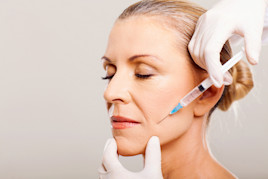
It can smooth out deep wrinkles and lines, but the results aren’t permanent. Here’s how long botox tends to last.

Use these professionally produced online infographics, posters, and videos to help others find and prevent skin cancer.

Free to everyone, these materials teach young people about common skin conditions, which can prevent misunderstanding and bullying.

You can search by location, condition, and procedure to find the dermatologist that’s right for you.

A dermatologist is a medical doctor who specializes in treating the skin, hair, and nails. Dermatologists care for people of all ages.
Bedbugs: How to avoid bringing them home
How to check for bedbugs
Bedbugs can cause a great deal of anxiety. To find bedbugs before they find you, follow these dermatologist tips.
How to avoid bedbugs when you travel
To reduce your chance of bringing bedbugs home, follow these dermatologist tips to check your hotel room, cabin, or other lodgings when traveling.
Place your luggage in the bathroom. When you arrive, temporarily place your luggage in a tiled area, like the bathroom, while you inspect your room. There are fewer spots for bedbugs to hide in bathrooms, so you can check your room without worry.
- Rusty or reddish specks of blood.
- Tiny, blackish dots that look like dots made by a marker — these may be bedbug feces.
- Whitish, oval bedbug eggs the size of apple seeds.
- Shell-like bedbug exoskeletons.
- Live bedbugs.
- After you check your room, you can bring your luggage in.
- Place your bags on a luggage rack away from the wall.
- If you find signs of bedbugs, request a new room.
- Use a flashlight to check the contents of your bags, including the seams of your clothing. Then, look closely at your luggage to make sure no bedbugs are hiding inside.
- If you find signs of bedbugs in your luggage, wash your clothes on high heat and use a hand steamer to clean your luggage.
If you notice any bedbug bites or experience blistering, a skin infection (bites feel tender or ooze discharge, such as pus), or an allergic reaction (red or purple swollen skin or hives), partner with a board-certified dermatologist.
How to avoid bringing bedbugs home in secondhand beds and other furniture
Bedbugs can be hard to find in secondhand beds and other furniture. If the bedbugs have not eaten for some time, you may not see signs of them. Bedbugs can live for about a year without eating.
You can prevent picking up bedbugs from secondhand furniture by not bringing secondhand furniture into your home.
Written by: Shelby Homiston Brooke Schleehauf
Reviewed by: Neelam Khan, MD, MS, FAAD Roopal Vashi Kundu, MD, FAAD William Warren Kwan, MD, FAAD Ata Moshiri, MD, MPH, FAAD Sanna Ronkainen, MD, FAAD Desmond Shipp, MD, FAAD
Last updated: 3/13/24
Bed Bug Prevention When Traveling

If you stay in a hotel or motel, keep these bed bug travel tips in mind. It is important that you take some precautions to ensure that your room is bed-bug free before you settle in. In a recent survey by NPMA, 75% of pest control professionals indicated that they have encountered infestations of bed bugs in hotels and motels. The NPMA recommends the following tips for bed bug prevention when traveling:
- At hotels, pull back the sheets and inspect the mattress seams, particularly at the corners, for telltale stains or spots. If you see anything suspect, notify management and change rooms/establishments immediately.
- Thoroughly inspect the entire room before unpacking, including behind the headboard and in sofas/chairs. If any pests are spotted, change rooms/establishments immediately.
- If you do need to change rooms, be sure that you do not move to a room adjacent and/or directly above/below the suspected infestation. Bed bugs can easily hitchhike via housekeeping carts, luggage and even through wall sockets. If an infestation is spreading, it typically does so in the rooms closest to the origin.
- Consider placing your suitcase in a plastic trash bag or protective cover during the duration of your trip to ensure that bed bugs cannot take up residence there prior to departure.
- Remember: bed bugs travel by hitching rides. After your trip, inspect your suitcases before bringing them into the house. Vacuum your suitcase thoroughly before storing away. Consider using a garment hand steamer to steam your luggage, which will kill any bed bugs or eggs that may have hitched a ride home.
- Wash all of your clothes - even those that have not been worn - in hot water to ensure that any bed bugs that may have made it that far are not placed into your drawers/closet.
Check out our other tips for preventing bed bugs in different settings:
- Everyday Prevention Tips
- Tips for the Office
- Tips While Shopping
- Tips for College Students
- Tips for Schools
- Tips for Summer Camp

- EXPLORE Random Article

How to Avoid Bed Bugs when Traveling
Last Updated: May 25, 2021 References
This article was co-authored by Kevin Carrillo . Kevin Carrillo is a Pest Control Specialist and the Senior Project Manager for MMPC, a pest control service and certified Minority-owned Business Enterprise (MBE) based in the New York City area. MMPC is certified by the industry’s leading codes and practices, including the National Pest Management Association (NPMA), QualityPro, GreenPro, and The New York Pest Management Association (NYPMA). MMPC's work has been featured in CNN, NPR, and ABC News. There are 7 references cited in this article, which can be found at the bottom of the page. This article has been viewed 56,240 times.
Imagine finally finding time to take a much needed vacation. Then, when you return home relaxed and feeling rejuvenated, you discover you now have a bed bug problem! It is no surprise that traveling is one of the easiest ways to bring the unwelcome pests into your home. While traveling, there are several precautions you should take to keep this nightmare from happening.
Booking Your Trip

- Keep in mind that negative comments may simply be an unhappy guest who just wants to ruin the hotel’s reputation. However, if you see several comments around the same topic like bed bugs, consider it a legitimate concern.

- Enjoy the outdoors Head to the nearest camp ground and sleep under the stars or in a cozy tent. Many camps are extremely clean, and offer hot showers for very reasonable rates.
During Your Hotel Stay

- Bugs are brown with a long, oval shaped body. Most are tiny, about the size of an apple seed but they can be larger, about the size of a nickel. You should also look for black fecal matter and a musty smell. [1] X Trustworthy Source United States Environmental Protection Agency Independent U.S. government agency responsible for promoting safe environmental practices Go to source
- Place the luggage rack away from any furniture. If the closet is large enough, keep it in there.

- Before wearing any garment, shake it out as an extra precaution.

- If you forget, ask the hotel to supply something like an extra trash bag.

- Do not move to an adjacent room. Request a move to another floor.
Returning Home

- If your luggage is a dark color it may be difficult to see. Use a lint roller, covering the entire bag, seams and zippers. [4] X Research source

- Don’t hang dry your clothes either. Tossing items into a scorching hot dryer will kill the bugs.
- Even items that weren’t worn should be washed. Bugs could have crawled throughout the bag. Better to be safe than sorry.
- Shoes can be wiped down with a cloth and some hot water. Leave them outside in the sunlight if possible for a couple of hours too.

- Never store suitcases under your bed.

- Contact a professional to discuss the extermination options available to you. They may recommend chemical or steam treatments. [9] X Research source
- Research pesticides but be clear on their use. While some are great for indoors, others can only be used outside. [10] X Trustworthy Source United States Environmental Protection Agency Independent U.S. government agency responsible for promoting safe environmental practices Go to source
Expert Q&A
- If you happen to notice that white powder is present within drawers, the closet, or around floorboards, it is likely that the room has already been treated for bed bugs. Thanks Helpful 0 Not Helpful 0
- Don't avoid travel for the fear of bed bugs. Thanks Helpful 0 Not Helpful 1
- Bed bugs can reproduce quickly so don't procrastinate with treating a problem. Thanks Helpful 0 Not Helpful 4
You Might Also Like

- ↑ https://www.epa.gov/bedbugs
- ↑ Kevin Carrillo. Pest Control Specialist. Expert Interview. 22 October 2019.
- ↑ https://www.bedbugs.umn.edu/travelers/inspecting-your-hotel-room-bed-bugs
- ↑ https://www.youtube.com/watch?v=4XWKhsaBaic
- ↑ http://www.orkin.com/other/bed-bugs/bedbug-bites/
- ↑ http://www.vdacs.virginia.gov/pdf/bb-heat1.pdf
- ↑ https://www.epa.gov/bedbugs/pesticides-control-bed-bugs
About this article

Did this article help you?

- About wikiHow
- Terms of Use
- Privacy Policy
- Do Not Sell or Share My Info
- Not Selling Info

An official website of the United States government
Here’s how you know
Official websites use .gov A .gov website belongs to an official government organization in the United States.
Secure .gov websites use HTTPS A lock ( Lock A locked padlock ) or https:// means you’ve safely connected to the .gov website. Share sensitive information only on official, secure websites.
JavaScript appears to be disabled on this computer. Please click here to see any active alerts .
Bed Bug Prevention, Detection and Control
This EPA brochure provides tips for preventing bed bugs day-to-day and while traveling, plus information about identifying bed bugs and controlling them if you find you have an infestation.
- Brochure on prevention, detection and control of bed bugs (pdf) (650 KB)
- Bed Bugs Home
- Learn about Bed Bugs
- — Characteristics of Bed Bugs
- — Finding Bed Bugs
- Protecting Your Home
- Protecting Yourself in Public Places
- Getting Rid of Bed Bugs
- — Do-it-yourself Bed Bug Control
- — Pesticides to Control Bed Bugs
- Bed Bug Information Clearinghouse
- Bed Bug Product Search Tool
- Finding Help with Bed Bug Problems
- Search Please fill out this field.
- Manage Your Subscription
- Give a Gift Subscription
- Sweepstakes
I Brought Bed Bugs Home From a Recent Trip — Here’s Why I Won’t Change How I Travel
I started to have an identity crisis about my personal travel style but then realized infestations can happen anywhere.
Elspeth is the Senior Vice President & Group General Manager of Dotdash Meredith's Travel Group. Her writing has appeared in the New York Times, Architectural Digest, Vogue, Playboy, and International and Australian Traveller.
:max_bytes(150000):strip_icc():format(webp)/IMG_7609-62704e3e5a9a41e68b2a6c5aa182575e.jpg)
Getty Images
Paris is no trendsetter when it comes to exposing tourists to bed bugs, but it took an outbreak during fashion week in one of the planet’s most elegant cities to make my recent brush with the subject feel chic enough to discuss widely.
During the first night in bed in the boutique hotel I chose on a recent trip, I woke up feeling a phantom itch on my legs. I was immediately transported back to my backpacking days, when I spent one full month on the road encountering bed bugs in every property I stayed in, from hostels, to resorts, to even a two-night boat trip.
But this time, with two more nights in the same bed ahead, I told myself it was in my head — and my husband was happy to agree. It wasn’t until a few days later when rows of bites started to appear all over my legs in suspicious patterns, that I was ready to accept reality. I knew it was true that physical evidence of bed bug bites can be delayed anywhere between one and several days after you’re bitten, as per the Centers for Disease Control and Prevention (CDC ).
Packing Tip
Bed bugs do not like tea tree oils, peppermint oil, or lavender, according to a flight attendant with advice on how to check your hotel room for the tiny insects. Travelers can make or buy a spray to use on their suitcase that'll act as a repellent.
On our return home, I immediately washed every item of clothing from our bags. Having not found anything suspicious, we put our suitcases away and put it out of our minds. That is, until we got home from a night out a few nights later and found a deceased bed bug on an area rug outside our bedroom. It was 2 a.m. — there was nothing to do but go to sleep, but nightmares about bed bugs plagued me all night.
In the morning, a friend referred me to her bed bug guy (she was coming out of her own recent scare), and a couple of texts and photos back and forth confirmed what I was dreading — there was definitely at least one bed bug in my apartment.
I made an appointment for inspection immediately and two days (and $400) later, my two beds, couch, and luggage were all drenched in pesticides. Luckily, no other signs of bugs were found. But our exterminator wasn’t surprised to hear that we found a bed bug after a recent trip as according to the United States Environmental Protection Agency (EPA) an appearance of these critters can happen due to travel.
Aside from the anxiety that came with dealing with a potential infestation in my home, this experience brought other conflicting emotions to the surface — leading to an identity crisis about my personal travel style. In the miserable few days spent stripping beds, rolling up rugs and evacuating my apartment to let the pesticides do their work, I didn’t tell any of my colleagues about what I was going through, because the truth is, I was embarrassed. I felt like getting bed bugs was my fault because I chose to stray from the luxury resorts of the destination I was in.
Upon my recent bed bug scare, I was told by multiple people in my life that it’s simply time to level up on the accommodation I was booking. But, though I'm older and more financially established now than I was when I backpacked across Southeast Asia and India ten years ago, my preference for travel hasn’t changed. Yes, I now enjoy a luxury stay here and there, obviously. But on almost every trip I take, I still try to see a range of accommodations, from Airbnbs to boutique and luxury properties, and I’ll even take a private room in a hostel when it makes sense.
Even though it was easy to feel resentment toward the hotel that gave me bed bugs (let me be clear, this place was clean, comfortable and had a beautiful setting!), eschewing more affordable stays is not how I want to travel. Staying flexible in that way is important to me — and pairing a few nights of luxury with a few nights somewhere more accessible is also a really great way to lighten the impact on my wallet. And by the way, infestations can happen anywhere, even on public transportation in the midst of a high-end global design event.
When I look back on my experience from ten years ago, it’s not the bed bugs that are the first thing I remember. It’s the people I met and the places I saw that made the most impact. The temporary inconvenience of insect anxiety I experienced then is long gone. And my most recent bout of the same soon will be too.
- Sustainability
- Latest News
- News Reports
- Documentaries & Shows
- TV Schedule
- CNA938 Live
- Radio Schedule
- Singapore Parliament
- Mental Health
- Interactives
- Entertainment
- Style & Beauty
- Experiences
- Remarkable Living
- Send us a news tip
- Events & Partnerships
- Business Blueprint
- Health Matters
- The Asian Traveller
Trending Topics
Follow our news, recent searches, cna explains: how to check for bedbugs when you travel – and avoid bringing them home, advertisement.
Worried you might get an unwelcome souvenir from a trip abroad?
Bedbugs seen in the seams of a sofa bed, in L'Hay-les-Roses, near Paris, France, Sep 29, 2023. (Photo: Reuters/Stephanie Lecocq)

Ang Hwee Min
SINGAPORE: Seen the news about a bedbug infestation in Paris? Or trending videos on TikTok of the pests scurrying out from under train seats in the City of Light?
With the French capital having recently hosted Fashion Week and the Rugby World Cup, there are growing fears of the bedbug problem spreading globally as visitors return home with the creepy-crawlies in their clothes and cases.
French authorities have insisted that not a single bedbug has been found by sniffer dogs deployed to the public metro. Yet reported sightings over in London prompted Mayor Sadiq Khan to state on Tuesday (Oct 10) that the situation was "a real source of concern".
For those who might be travelling to the affected regions, here’s what you can do to (try and) protect yourself from the little pests.

France hits back at bedbug 'invasion' hysteria, calls in sniffer dogs to inspect trains
What harm do bedbugs cause.
Bedbugs feed mainly on the blood of humans. They are not known to spread disease.
Family doctor Lye Tong Fong said bedbug bites may be red and itchy like typical insect bites, and there are no serious complications for most people.
Symptoms can be resolved with oral antihistamines and calamine lotion.
It is “very rare” to go into anaphylactic shock because of an allergic reaction to bedbug bites, he added.
Those who scratch too hard at their bedbug bites may suffer from skin infections or lymphangitis, which is an infection spreading along the lymphatic system, said Dr Lye.
But these can happen to anyone with skin conditions that cause itching, including other common insect bites as well as eczema.
How can bedbugs be sniffed out?
The tiny critters are usually coloured black, dark brown or maroon.
Those that have recently fed on humans appear plump, while bedbugs that have not drawn blood for a while appear flat.
Their egg cases are translucent, pale yellow and about 1mm wide, which can make them difficult to spot.
In Paris, bedbugs have been reportedly spotted on public transport and in cinemas. But their main source? Hotel rooms, said Pestbusters general manager Angela Toh.
So before booking their hotels, travellers could check online reviews for previous cases of bedbugs, said Star Bugs CEO Andy Ma.
After entering the room, they should first check the bed by removing the bedsheets and looking closely at the seams of the mattress.
“Brush your fingers through, don’t be afraid to get bitten because the bedbugs don’t bite so fast. If there are any bedbugs, you’ll most probably push out some,” he added.
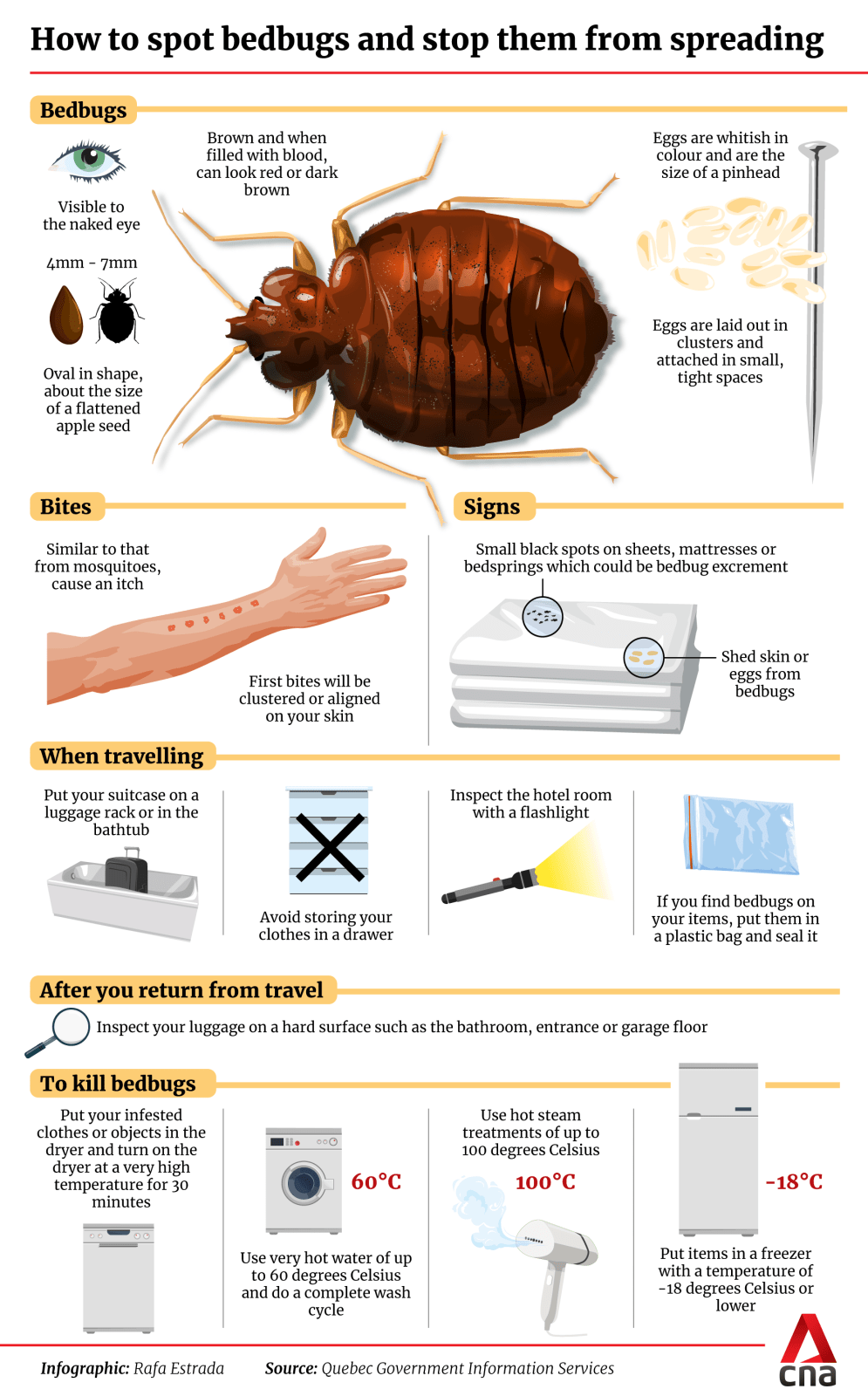
Signs of bedbugs include blood stains and their exoskeletons, which may look like wood shavings. Fecal spots or rust-coloured splotches may also be present.
Apart from the bed, other places to check - preferably with a torchlight - include the bed frame, furniture, electrical outlets, behind paintings, in closets and other nooks and crannies around the room.
“They are cave insects so they will actually hide in cracks, sometimes in the sofa, or around the corners of the room,” said Mr Ma.
Travellers can opt to leave their suitcases and clean clothes in the bathtub if there is one. This is because the surface of a tub is very smooth, and it will be difficult for bedbugs to get in, said Darian Ee, director of pest control firm Ikari Services and a spokesman for the Singapore Pest Management Association.
He noted that bedbug-proof cases for suitcases are available online.
If attacked by bedbugs, victims will usually see on their skin multiple bites grouped together in a zig-zag or straight line.
Experts said that in changing rooms, travellers should ask for one as far as possible from the infested room or on another floor altogether - because bedbugs are known to easily spread through walls.
The best option would be to change hotels.

Bed bugs on planes: How to spot the signs and why they are 'almost impossible' to prevent
Can bedbugs be killed by insect repellent.
Experts were split on whether store-bought insect repellents are effective against bedbugs.
Pestbusters' Ms Toh said home remedies like essential oils may help to prevent bedbugs from smelling the humans in the room, but they do little to deter them from eventually finding a subject to feed on.
“At the end of the day, if bedbugs really want to suck human blood, they can detect human warmth," she added, noting that the hardy creatures can survive without a blood meal for about nine months.
Diatomaceous earth, a white powder, will dehydrate bedbugs when they come into contact with them, said Mr Ee. This can be sprinkled in dark corners but should be purchased from reliable sources.
What else can be done after getting home?
Travellers back from their holidays can take extra steps to weed out any bedbugs that might have latched onto their clothes or suitcases.
They can unpack their luggage near the door, far away from bedrooms or any clothed surfaces like sofas and carpets.
Mr Ma from Star Bugs advised checking through each piece of clothing and the seams of luggage.
Clothes can also be immediately soaked in hot water - above 60 degrees Celsius - for at least 90 minutes, said Ms Toh.
After this, they can be put in the washing machine and dryer, where the heat will further ensure that any bedbugs left are killed.
For thicker winter clothes, sending them to a dry cleaning or laundry service is another option.
Battling bed bugs. What can we do? Listen to Daily Cuts:
Related topics, also worth reading, this browser is no longer supported.
We know it's a hassle to switch browsers but we want your experience with CNA to be fast, secure and the best it can possibly be.
To continue, upgrade to a supported browser or, for the finest experience, download the mobile app.
Upgraded but still having issues? Contact us
Need pest help? Save $50 on your first recurring service today with code GET50
How Do Bed Bugs Travel?
Bags & personal belongings.
Bed bugs are transported by people, most often in personal belongings such as the following:
Luggage & Suitcases
Items kept close to sleep areas
They can hide in your personal belongings, or even on you, and hitchhike a ride back to your home, condo, townhouse or apartment.
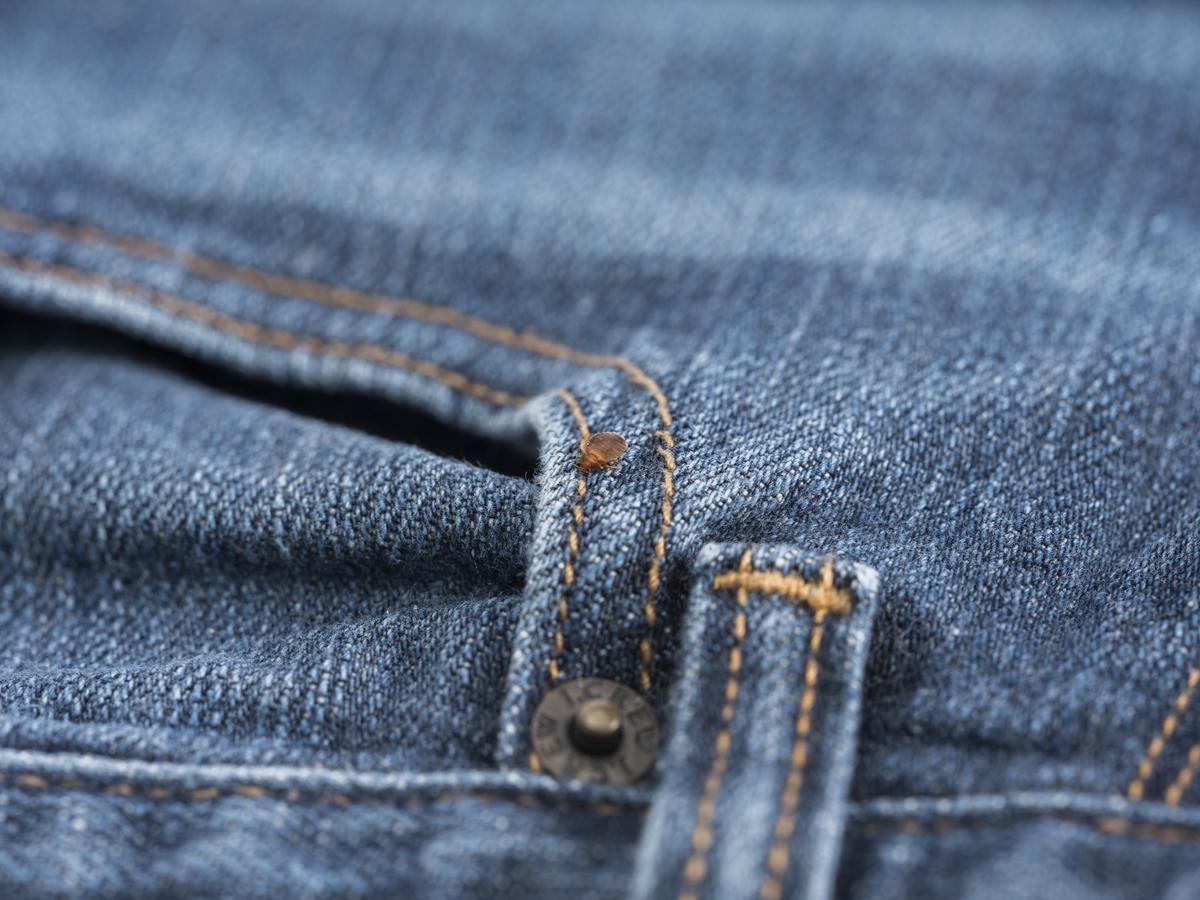
A bed bug on jeans
Where do you pick them up?
It’s possible to pick up bed bugs almost any place - they've infested offices, stores, hotels, gyms and countless other places.
Prefer people over pets
The common bed bug prefers to feed on human hosts and does not prefer pets or other furry animals.
Bed bugs are easily transported into previously non-infested dwellings.
Once indoors, they can be extremely difficult to control without the help of an experienced pest specialist.
If you suspect you may have picked up some of these hitchhikers in your travels, call Orkin for a comprehensive bed bug inspection and assessment and implementation of a treatment solution.
Protect Your Home from Bed Bugs
Are bed bugs nocturnal | do bed bugs only bite at night, do bed bugs hide in pillows | signs of bed bugs, do bed bugs feed every night | bed bug life cycle, pest control, bed bug pest control treatment | bed bug exterminator.
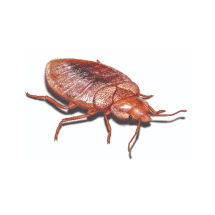
Do you use super heating to kill bed bugs?
What Do Bed Bugs and Eggs Look Like on Clothes?
What do I do with the clothes?
Spraying for bed bugs did not work
If the neighboring unit has bed bugs, am I looking at being sprayed every three months?
Bed Bug Bites on Humans | Get Rid of Bed Bugs
What eats bed bugs | bed bug predators, what do bed bugs look like | bed bug identification, connect with us.
Our customer care team is available for you 24 hours a day.
Find a Branch
Our local Pros are the pest experts in your area.
Get a Personalized Quote
We will help you find the right treatment plan for your home.
Parasites - Bed Bugs

Bed bugs, a problem worldwide, are resurging, causing property loss, expense, and inconvenience. The good news is that bed bugs do not transmit disease. The best way to prevent bed bugs is regular inspection for signs of an infestation.
Image: Bed bugs hiding in the ribbing of a mattress corner.
Most common questions answered...
Stages of parasite development...
Related articles and journal entries…
What you need to know...
To receive email updates about this page, enter your email address:
- Parasites A-Z Index
- Parasites Glossary
- Neglected Tropical Diseases
- Laboratory Diagnostic Assistance [DPDx]
For Healthcare Providers, Emergency Consultations, and General Public.
Contact Us -->
Exit Notification / Disclaimer Policy
- The Centers for Disease Control and Prevention (CDC) cannot attest to the accuracy of a non-federal website.
- Linking to a non-federal website does not constitute an endorsement by CDC or any of its employees of the sponsors or the information and products presented on the website.
- You will be subject to the destination website's privacy policy when you follow the link.
- CDC is not responsible for Section 508 compliance (accessibility) on other federal or private website.
- Skip to main content
- Keyboard shortcuts for audio player
Here's what to know about dengue, as Puerto Rico declares a public health emergency
Joe Hernandez

Victoria Micieli, director and scientist at the Center for Parasitological and Vector Studies of the national scientific research institute CONICET, classifies different species of mosquitoes at a laboratory in La Plata, in Argentina's Buenos Aires Province, on Tuesday. Luis Robayo/AFP via Getty Images hide caption
Victoria Micieli, director and scientist at the Center for Parasitological and Vector Studies of the national scientific research institute CONICET, classifies different species of mosquitoes at a laboratory in La Plata, in Argentina's Buenos Aires Province, on Tuesday.
Puerto Rico has issued a public health emergency after recording an unusually rapid rise in dengue cases over the first few months of this year.
It's the latest area to grapple with a surge of infections of the mosquito-borne disease, which sickens an estimated 100–400 million people globally each year.
According to Puerto Rico's health department, the territory has recorded 549 cases since the start of the year, nearly half of which have occurred in the San Juan region. Puerto Rico saw a total of 1,293 cases throughout all of last year, the Associated Press reported .

Goats and Soda
With a million cases of dengue so far this year, brazil is in a state of emergency.
"This year, dengue cases have exceeded historical figures," Puerto Rico's health secretary Carlos Mellado López said in a statement.
Dengue has been surging elsewhere, too. Brazil has seen a dramatic uptick in dengue this year, with more than one million cases, while Peru experienced a record number of infections last summer. Argentina is also on the cusp of a record-breaking dengue outbreak .
According to the World Health Organization, about half of the world's population is now at risk for the disease.
What is dengue?
People typically contract dengue through the bite of an Aedes mosquito infected with one of the four types of the dengue virus.
Most people with dengue will show no signs of infection or experience only mild symptoms , such as fever, muscle and joint pain and nausea. They typically recover in one or two weeks.
According to the Centers for Disease Control and Prevention, only a quarter of people infected with dengue get sick.

Shots - Health News
The u.s. is unprepared for the growing threat of mosquito- and tick-borne viruses.
In rare cases, dengue can require hospitalization and be potentially fatal. More severe symptoms include bleeding gums and nose, abdominal pain and persistent vomiting.
Those who've gotten dengue previously are more likely to become seriously ill with a subsequent infection.
Though there is no specific medicine to treat dengue, sufferers can take acetaminophen to control their fever and reduce pain.
How to keep yourself safe
Roughly half of the Earth's population could catch dengue where they live. Found most commonly in tropical and subtropical climates, dengue is endemic to more than 100 countries in Asia, Africa, the Americas and elsewhere, according to the WHO, and has been spreading to parts of Europe. Last year Florida and Texas reported dengue cases.
There is a vaccine for dengue called Dengvaxia. In the U.S., it is approved for use in children between ages 9–16 who have previously been infected with the disease, and in other parts of the world it is available to adults up to age 45.
Experts say the best way to avoid contracting dengue is to prevent mosquito bites .

There's A Promising New Vaccine For One Of The World's Top Health Threats
Insect repellents such as DEET, Picaridin and IR3535 can help keep mosquitoes at bay. People can also wear loose-fitting clothing that covers their arms and legs and use mosquito nets.
At home, people should have screens in windows and doors and regularly dump standing water from items like flower pots to prevent mosquitoes from laying eggs.
- Puerto Rico

IMAGES
VIDEO
COMMENTS
To effectively kill bedbugs, the surface temperature needs to be at least 120 degrees Fahrenheit, so you'll need a steamer strong enough to reach those temperatures, such as the Beautural travel steamer. For $35, this steamer provides 15 minutes of continuous steaming via a detachable 8.79-ounce water tank.
Check the mattress and headboard before sleeping. Inspect luggage racks. In hotel rooms, use luggage racks to hold your luggage when packing or unpacking rather than setting your luggage on the bed or floor. Try to keep luggage away from bed. Upon returning home, unpack directly into a washing machine and inspect your luggage carefully.
Bed bugs thrive in darkness, so turn off the lights and close the curtains to make sure you're as thorough as possible. Using your flashlight, take the sheets off the bed and inspect the corners of the mattress. If you see little dots, it could be blood, waste, or carcasses of bed bugs. Also, shine your flashlight in outlets, furniture screws ...
The bugs tend to feed at night and hide during the day in the seams of mattresses, behind headboards, inside cracks and crevices in a room, in bed frames, furnishings, and box springs, among other locales, according to the CDC. Once inside a dwelling, says Anderson, bed bugs' numbers can build up long before humans even notice them—especially if there are pets in the house that they can ...
Place your bags on a luggage rack away from the wall. If you find signs of bedbugs, request a new room. Check your luggage when you get home. After your trip, look at your belongings before unpacking to make sure no bedbugs came home with you. Use a flashlight to check the contents of your bags, including the seams of your clothing.
Turn your beds into islands: Move them at least 6 inches from the wall if possible. Try to rid your beds of all bedbugs, larvae and eggs. Snugly place bed-bug-proof covers (often called ...
A bed bug outbreak in Paris just nine months before the Olympic Games has tourists wondering how to prevent and treat those pesky critters, so Travel + Leisure spoke with experts about what to ...
The bed bugs travel in the seams and folds of luggage, overnight bags, folded clothes, bedding, furniture, and anywhere else where they can hide. ... contact your landlord or professional pest control company that is experienced with treating bed bugs. The best way to prevent bed bugs is regular inspection for the signs of an infestation.
How to Prevent Bed Bugs After Travel. Take these steps before you go into the house if possible. Inspect your bags. Inspect your clothing and shoes. Quarantine your luggage in the garage or other area outside of the home. Vacuum your luggage. Clean clothing in the washer with hot water and high heat for drying.
The NPMA recommends the following tips for bed bug prevention when traveling: At hotels, pull back the sheets and inspect the mattress seams, particularly at the corners, for telltale stains or spots. If you see anything suspect, notify management and change rooms/establishments immediately. Thoroughly inspect the entire room before unpacking ...
1. Inspect your luggage. Before entering your home, check the outside of your bags for any bed bug evidence like small eggs, a faint smell, etc. If you suspect you brought a few home with you, leave the bags in the garage or backyard. Do not take them inside. If your luggage is a dark color it may be difficult to see.
The chance of picking up bed bugs when you travel is low, but as infestations become more common throughout the world, it is . ... An adequate bed bug prevention and control program should include regular inspections and access to a professional pest . control company - even if the hotel has never had bed bugs. ...
9. Reduce the number of bed bugs to reduce bites. Thorough vacuuming can get rid of some of your bed bugs. Carefully vacuum rugs, floors, upholstered furniture, bed frames, under beds, around bed legs, and all cracks and crevices around the room. Change the bag after each use so the bed bugs can't escape.
LED Flashlight. Amazon. Buy on Amazon $13 $10. And finally, experts recommend "packing a small, bright flashlight to inspect your room when you arrive," to check for any signs of bed bugs in ...
Bed Bug Prevention, Detection and Control. This EPA brochure provides tips for preventing bed bugs day-to-day and while traveling, plus information about identifying bed bugs and controlling them if you find you have an infestation. Brochure on prevention, detection and control of bed bugs (pdf) (650 KB) Last updated on July 10, 2023. Tips in ...
Gya Labs Lavender Essential Oil. Amazon. Lavender oil is great to have on hand when you're on the move. After all, bedbugs have also been found on public transit, planes, trains and automobiles ...
Bed bugs do not like tea tree oils, peppermint oil, or lavender, according to a flight attendant with advice on how to check your hotel room for the tiny insects. Travelers can make or buy a spray ...
After entering the room, they should first check the bed by removing the bedsheets and looking closely at the seams of the mattress. "Brush your fingers through, don't be afraid to get bitten ...
Bags & Personal Belongings. Bed bugs are transported by people, most often in personal belongings such as the following: They can hide in your personal belongings, or even on you, and hitchhike a ride back to your home, condo, townhouse or apartment. Many people ask if bed bugs can jump, but they can't and dont travel that way.
Parasites. Bed bugs, a problem worldwide, are resurging, causing property loss, expense, and inconvenience. The good news is that bed bugs do not transmit disease. The best way to prevent bed bugs is regular inspection for signs of an infestation. Image: Bed bugs hiding in the ribbing of a mattress corner.
Puerto Rico has issued a public health emergency after recording an unusually rapid rise in dengue cases over the first few months of this year. It's the latest area to grapple with a surge of ...